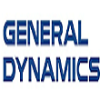We perform quantum process tomography (QPT) for both discrete- and continuous-variable quantum systems by learning a process representation using Kraus operators. The Kraus form ensures that the reconstructed process is completely positive. To make the process trace-preserving, we use a constrained gradient-descent (GD) approach on the so-called Stiefel manifold during optimization to obtain the Kraus operators. Our ansatz uses a few Kraus operators to avoid direct estimation of large process matrices, e.g., the Choi matrix, for low-rank quantum processes. The GD-QPT matches the performance of both compressed-sensing (CS) and projected least-squares (PLS) QPT in benchmarks with two-qubit random processes, but shines by combining the best features of these two methods. Similar to CS (but unlike PLS), GD-QPT can reconstruct a process from just a small number of random measurements, and similar to PLS (but unlike CS) it also works for larger system sizes, up to at least five qubits. We envisage that the data-driven approach of GD-QPT can become a practical tool that greatly reduces the cost and computational effort for QPT in intermediate-scale quantum systems.
翻译:我们通过使用Kraus操作员学习一个进程代表,对离散和连续可变量量系统进行量子过程断层法(QPT),我们通过使用Kraus操作员学习一个进程。Kraus形式确保了重建过程完全是积极的。为了使进程保持追踪,我们在优化过程中对所谓的Stiefel 元件使用受限的梯度(GD)法(GD)来获取Kraus操作员。我们的ansatz操作员利用几个Kraus操作员来避免直接估计大型过程矩阵,例如Choi 矩阵,用于低级量程序。GD-QPT(PS)和预测的最小平方(PLS)的性能都符合压缩和预测的最低平方(PLS)的性能。我们设想,与CS(但不同于PLS)相似,GD-Q(但不同于CS)一样,GD-PT(CS)可以重建一个过程,从少量随机测量到类似PLS(PLS)的大规模系统规模。G-PTQ(但不同于C)也为更大的系统工作,至少可以降低五平方位。我们设想G-PT-PT-PT-PT-Q的中以实际计算方法。



